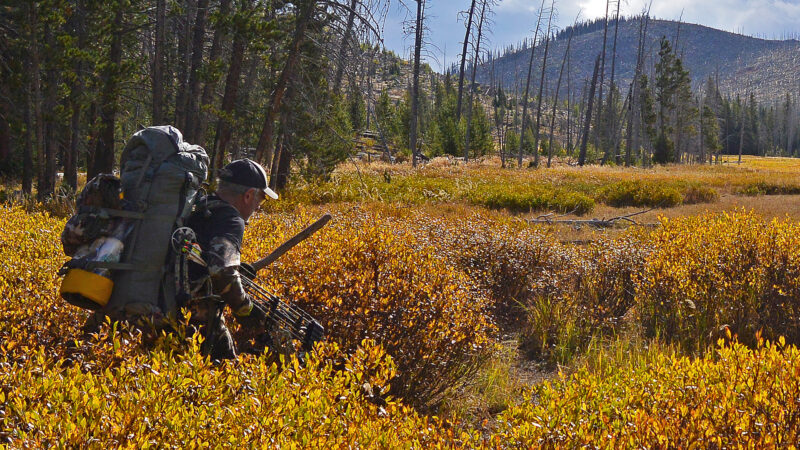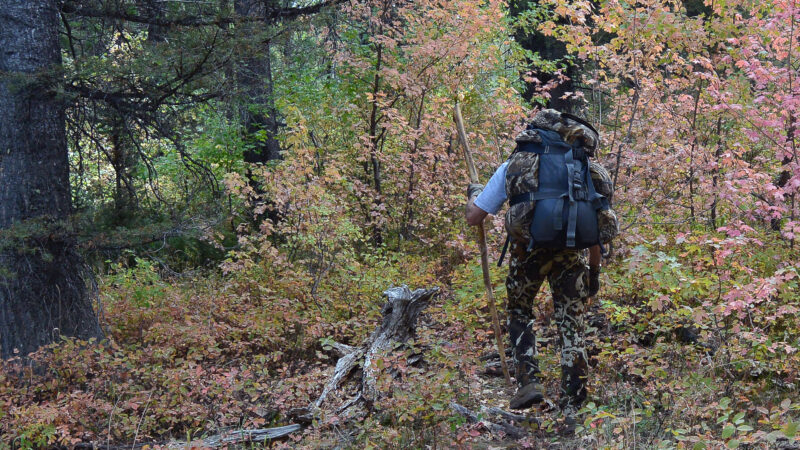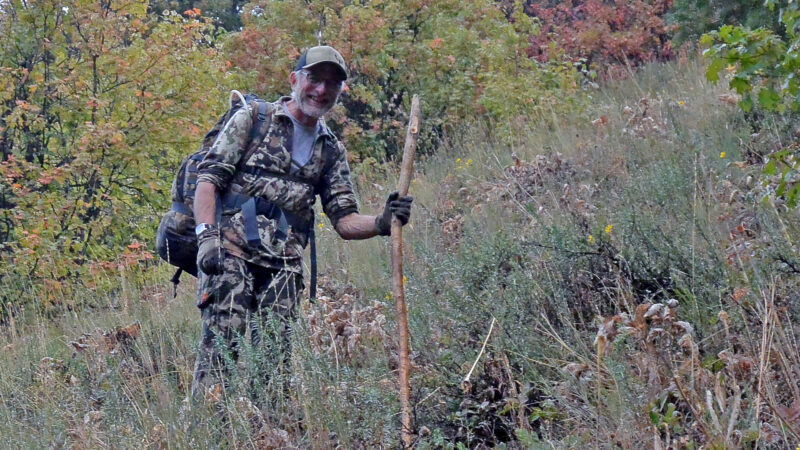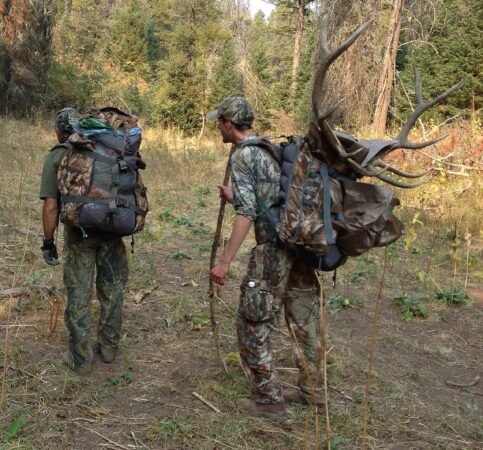Bowhunters should take a cue from runners to ensure they go into autumn with strong, flexible joints for all the walking, stalking, meatpacking and deer dragging that awaits.
What do runners know that most bowhunters don’t?
In short, it all starts with the butt, as in buttocks. If you want strong, healthy hips, knees, ankles and feet, you must have strong glutes.
The gluteus maximus, medius and minimus are the three muscles where it all starts.
The gluteus maximus is the largest of the butt’s three major muscles. It’s thick and narrow, and gives the butt its overall shape. The gluteus medius is broad and thick, and surrounds the pelvis’ outer surface. Its rear third is covered by the gluteus maximus. The gluteus minimus is the smallest of the glutes, and lies beneath the gluteus medius.

Core Essentials
A bowhunter’s body, just like a runner’s, requires a strong core, which includes everything except your limbs, neck and head. But a strong core is far more than a well-defined six-pack. What you see in the mirror shows only part of the core.
Butt muscles are essential to that strong core, as well as everything attached below. If your core is weak, your hips will start hurting and your knees will start dropping inward. Soon, the pain increases and potential trouble lurks from your hips to your toes.
Strong muscles in the hips, back, butt, pelvis and deep abdomen are essential for controlling, powering and stabilizing your body during hard work. Weak or tight core muscles can cause an aching Achilles’ tendon, a bad knee, painful plantar, or sore calf or shoulders, to name a few injuries.
Overweight, out-of-shape bowhunters often suffer compensation injuries in their joints because they have a weak core. All those body parts are connected, just as you might recall from the children’s song “Dem Bones.” Feel free to sing along: “The leg bone’s connected to the knee bone; The knee bone’s connected to the thigh bone,” and so forth.
A strong core gives your joints a wide, stable foundation. The weaker the core, the narrower and shakier the foundation. As weak links get exposed, muscles and ligaments start compensating, and suddenly a hip, knee or an ankle starts complaining. They aren’t lazy. They’re just working too hard and too long while compensating for problems above.

Year-Round Fitness
To prevent joint injuries, bowhunters of all ages should spend time in gyms year-round with weights and strength-training. Too many of us, however, wait until we’re months, or even weeks, away from a dream bowhunt before getting serious about weight loss, endurance and strength training.
To make up for their tardiness, they often rush into their training too aggressively, or think they can simply run their way to fitness. That’s why the DIY approach isn’t the best way to get into shape — or stay in shape — for bowhunting.
Before starting or ramping up your training, consult your doctor, and consider enrolling in a fitness class or training program taught by qualified instructors. If you balk at paying for expertise, consider your risks in medical bills, lost opportunities, or even a heart attack.
Bill Koepke is a certified athletic trainer who is head coach of D1 Training and director of Team Early AF in Stevens Point, Wisconsin. He works with clients from ages 2 to 95, and from amateurs to college and professional athletes.
In recent years Koepke has focused more on outdoor recreationists, whether they’re hunters, bowhunters, hikers, kayakers, mountain-bikers or high-country trout anglers. Among his frequent clients are gun-hunters and bowhunters preparing for Africa, fly-in hunts in Alaska or Canada, or high-elevation treks into the Rocky Mountains.

“I’ve worked with plenty of guys who jumped in too fast, hurt themselves, and couldn’t hunt anywhere that fall,” Koepke said “There’s nothing sadder than someone who gets hurt before hunting season even begins. They’re no better off than the guy who shows up in camp overweight and out of shape, and can’t leave the tent. I also know guys who went all in, embraced competitive fitness, and feasted on sprinting and box jumps. They got going too fast and breathing too heavily, and suddenly they tripped and sprained their ankle so bad they needed months just to recover. You must be deliberate, not reckless.”
Give Yourself Time
Those who haven’t exercised or watched their diet for decades should start training about a year in advance. “Wherever you are in your fitness, don’t settle for where you are now,” Koepke said. “Find a diet, lifestyle and fitness program that gets you back to doing what you love. It’s never easy to start, but you can start today.”
Some basic advice for re-entry:
— Every pound lost is a healthy gain. Every shed pound takes about 4 pounds of pressure off your knees.
— Start with activities that are easy on your joints. Try walking, bicycling, swimming or cranking on elliptical machines. Include regular strength training, too.
— When you start running, increase your speed and distance gradually. If you run patiently and carefully, you’ll strengthen joints through sustained conditioning.
— If you have joint problems, avoid quick, repetitive movements. Work with a trainer or therapist to strengthen and increase joints’ flexibility.
— Don’t overdo it. Some muscles ache after exercise, but learn to distinguish aches from pains. If you feel pain three days later, see a doctor before trying to work through it. Don’t turn small pains into major injuries.
— If you have joint pain or want to prevent it, eat more salmon and other fish. If you don’t like fish, take fish oil in capsules.
— When treating an injury, apply ice to numb aches and ease swelling. Wrap the ice or cold pack with a towel, and leave it on the sore spot up to 20 minutes.

Conclusion
As you progress in your fitness and workouts, don’t beat yourself up with extra miles or heavier weights than your body can handle. Koepke likes to mix things up by scheduling one to three days per week for strength training, mobility and flex training; alternating with two days of weight training to build extra strength; and the final day on yoga or swimming.
“The next week I’ll flip all that and have them do two days of flexibility training and one day of weight training,” he said. “It’s important to hit all aspects of training to build strength, flexibility and endurance.”

 By
By 



